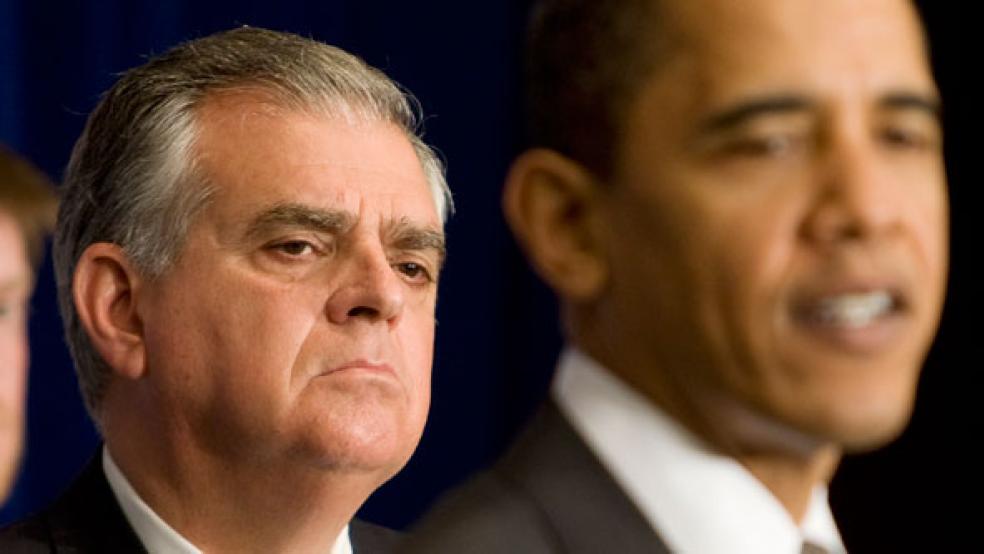Forty-four years ago, the director of the National Parks Service came up with what he thought was a good plan to punish taxpayers for budget cuts.

Rather than looking for ways in which to save costs while providing expected services, George Hertzog closed several national parks two days a week, including the Grand Canyon and the Washington Monument. Congress, which had demanded cost savings, responded by getting Hertzog fired – but also restored the funding to the National Park Service. Thus was born “Washington Monument Syndrome.”
Almost a half-century later, Hertzog’s political innovation has become an art form in the administration of Barack Obama. Faced with a budget cut that the White House demanded as part of the budget standoff in August 2011, the administration has decided to make taxpayers suffer for the reduction of 2.3 percent in federal spending required by the sequester.
Never mind that in the preceding six years, the federal budget grew 36.5 percent from $2.77 trillion in FY2007 to a proposed $3.78 trillion for FY2014. The spending level proposed by the Obama administration would be the highest level ever, of course, but that’s apparently not enough to assuage the egos in the executive branch after being told to tighten the belt a bit after a massive spending binge.
How best to punish the taxpayers for their demand of accountability and minimal thrift? Obama has decided to inflict pain on a particularly sensitive spot – air travel. For nearly a dozen years after the 9/11 attacks, new security measures imposed by the Department of Homeland Security has X-rayed, scanned, and groped passengers in the name of greater security and safety, even while serious questions about the efficacy and efficiency of TSA have remained unanswered.
Now, however, Transportation Secretary Ray LaHood and FAA Administrator Michael Huerta have taken the exact opposite tactic in dealing with the reduction of funds to the FAA by furloughing air-traffic controllers, causing flight delays and travel disruptions.
Wait, did I say “reduction of funds?” Over the same six-year period, the FAA budget has increased from $14.5 billion in FY2007 to $15.9 billion in FY2012, with the FY2014 budget proposal percent202014 percent20Budget percent20Highlights.pdf set for $15.5 billion. The budget increased 9.7 percent between FY2007 and FY2012, and even with a proposed reduction of $400 million in FY2014, the FAA would still have increased 6.9 percent in seven years. If that seems modest, consider that air traffic levels have declined by 27 percent since the 9/11 attacks – and that FAA funding has increased 41 percent in the same period.
In fact, CNN’s Candy Crowley confronted LaHood two months ago on this very point. “Budgets go up and down,” was LaHood’s weak response, but he’s only half right. In Washington, they only go up.
Nor does LaHood, Huerta, or anyone else within the FAA or Department of Transportation seem to have any clue as to the actual purpose of any budget, which is the prioritization of finite resources. Congress called Huerta to testify Wednesday about the steps the FAA took to avoid the ATC furloughs that have delayed flights this week.
Huerta claimed that he didn’t have the authority to reprioritize funds within the FAA to keep ATC staffing levels at proper levels. A skeptical Rep. Mike Rogers asked whether Huerta bothered to check with Congress to get that kind of flexibility.
“Have you asked the Congress for those changes to allow you to do that?” Rogers asked during a transportation subcommittee hearing on Capitol Hill.
“No,” Huerta replied.
The Wall Street Journal, however, shot down that argument before Huerta even had a chance to make it. “Legally speaking,” wrote the editorial board, “the sequester applies at a more general level known as "accounts." The air traffic account includes 15,000 controllers out of 31,000 employees. The White House could keep the controllers on duty simply by allocating more furlough days to these other non-essential workers.”
Furthermore, the impact of the furloughs far outstrips the mild reduction in spending from the sequester, the WSJ reminds us. “The sequester cuts about $637 million from the FAA, which is less than 4 percent of its $15.9 billion 2012 budget, and it limits the agency to what it spent in 2010,” the analysis continues. “The White House decided to translate this 4 percent cut that it has the legal discretion to avoid into a 10 percent cut for air traffic controllers.
Though controllers will be furloughed for one of every 10 working days, four of every 10 flights won't arrive on time.” If the airlines had pulled this stunt and created 3-hour delays for passengers, the Journal points out, they would have broken the “passenger bill of rights” passed at the insistence of the Obama White House in 2009.
In other words, the Obama administration could easily have avoided the delays. The White House instead chose to impose as much pain as possible, grandstanding on the impact of sequester cuts that dare to trim less than 3 percent overall from a budget that has grown by more than a third in six years.
Why? Just as with Hertzog’s ploy in 1969, Obama wants to impose a kind of budget-cut fatigue, and they’re running out of time in which to do so. The FY2014 budget debate will take place shortly in Congress, and Obama wants to spend more than ever--as his long-overdue budget proposal makes clear. If the sequester succeeds and the world doesn’t come to an end, taxpayers may want even bigger spending reductions in the future.
And, the Obama administration has apparently decided, that just won’t do. Instead, they prefer to make these ridiculously small reductions from peak spending as painful as possible, in order to punish taxpayers for the sin of having expected government to act responsibly with their taxes. George Hertzog would be proud.






